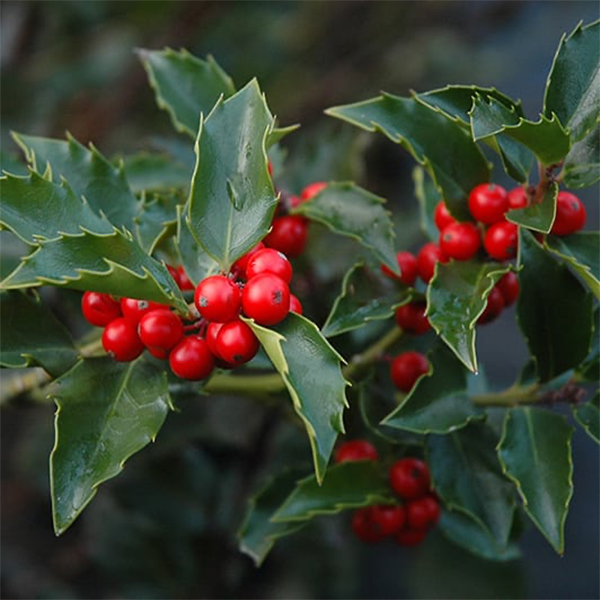
Some of the plants in my gardens are looking a bit weary now as they approach their dormancy and the growing season draws to a close. But I’m encouraged by some of the seasonal features that are showing up as the days grow shorter and autumn is upon us. The fruit and berries on some of my trees and shrubs actually add as much color as springtime flowers do, and many attract birds. I appreciate that they’re longer lasting than flowers–some berries will continue making my landscape attractive for many weeks yet.
Beautyberry (Callicarpa) is showing its clusters of petite brilliant-purple fruit; not many plants have berries with this unusual color. Cotoneaster’s shiny red berries hold-on for weeks, complementing the red and purple fall foliage. Some of the new black chokeberry (Aronia melanocarpa) hybrids produce glossy-black edible fruit, and their compact stature makes them ideal to tuck into smaller areas in my gardens.
The autumn berries of several viburnum cultivars persist well, often into winter. Linden viburnum (V. dilitatum) ‘Cardinal Candy’ produces heavy clusters of shiny red berries. American cranberrybush (V. trilobum) ‘Bailey Compact’ berries are red and sour, not readily taken by birds, so they last a long time. Arrowwood viburnum (V. dentatum) ‘Blue Muffin’ is more compact than the species and produces striking clusters of intense-sapphire-blue berries
Northern bayberry (Myrica pensylvanica) has naturalized in the less-cultivated areas of my yard. I love the look and aroma of its fragrant, ghostly-blue-gray waxy berries that cluster around each stem. I’ll admit to trying to make bayberry candles from the fruit, sadly without success. It’s a great native plant growing along the woodland edges, looking attractive all year long.
Among my favorites are the winterberries (Ilex verticillata& cvs.). These versatile native shrubs begin showing off their fabulous fruit as the nights get colder and their leaves turn yellow and drop. They succeed in most any location, hold their berries well into cold weather and I appreciate how showy they are indoors as cut branches. These are some cultivars selected for prolific fruiting and berry size: ‘Red Sprite’, ‘Berry Heavy’ and ‘Afterglow’. The small-red-berried ‘Sparkleberry’, a hybrid between the native and an oriental species, was developed by the US National Arboretum, and has been an outstanding performer in my yard.
Berries on all the evergreen hollies color-up as the weather cools. I love American holly (Ilex opaca), an underutilized native tree and a feature in my yard for decades. The many cultivars of the blue hollies (Ilex x meserveae) including ‘Blue Maid’, ‘Blue Princess’ and ‘Castle Spire’, work well in most any landscape plan. All these have red berries that last well into winter, until the birds finally take them.
About the Author
Wayne Mezitt is a 3rd generation nurseryman, a Massachusetts Certified Horticulturist, now chairman of Weston Nurseries of Hopkinton, Chelmsford & Hingham MA, and owner of “Hort-Sense”, a horticultural advisory business. He currently serves in various capacities on several horticulturally-related organizations, including the Massachusetts Horticultural Society at The Gardens at Elm Bank in Wellesley MA, and chairman for the Massachusetts Invasive Plant Advisory Group (MIPAG).









